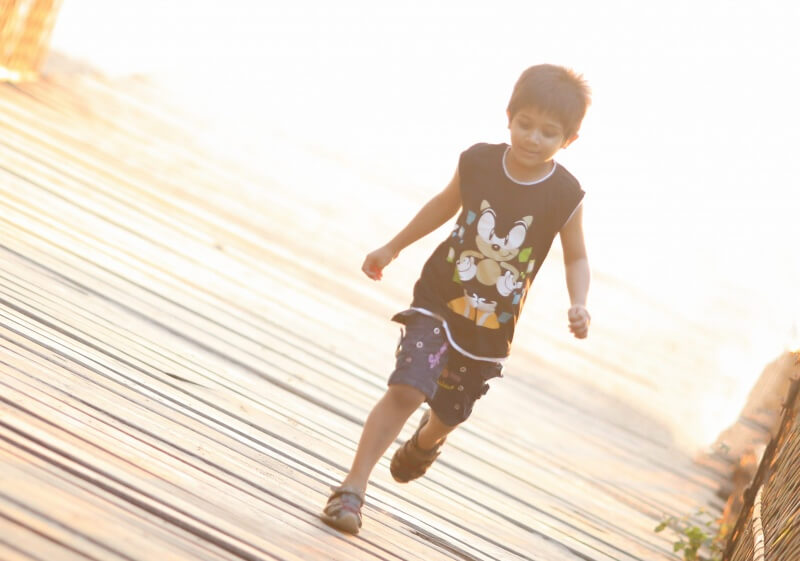Colorado Academy’s physical education program is designed, literally, to get students off on the right foot. No wonder then, that PE class for Lower School students at CA includes the scientific study of human movement, or Kinesiology.
Says Coach, PE and Kinesiology teacher Sean Stedeford, “The ultimate goal is for the students to grasp how the human body is unique, and to have a better understanding of how muscles, bones, and even the brain, work to together to help humans move – both in every day activities, and in athletics.”
On this day, fifth grade students are working in pairs in CA’s Newton Gymnasium with iPads recording and analyzing movements and skills: First, throw a ball using just your wrist, next use your forearm, and next, engage the muscles in your shoulder and your back while taking a step forward before you throw. “I will never watch a baseball pitcher in the same way again!” said one fifth-grade student. “Now I know why they (pitchers) bring up their knee (‘the stretch’) before they release the ball!”
“The ultimate goal is for the students to grasp how the human body is unique, and to have a better understanding of how muscles, bones, and even the brain, work to together to help humans move – both in every day activities, and in athletics.”
Explains Stedeford, “We use iPads in 5th grade to help students analyze and compare movements; students are taught to look for similarities and differences when considering the action, and they begin to understand how they might be able to perform a skill better.”
Students use an app called V1Sports that helps allows them to record one another, analyze each other’s movement, and with correctional tools and put together a final project demonstrating their learning. Stedeford says, “I also use the iPad to show the second through fourth grade students how different joint actions work together to help people move more efficiently. I am currently playing with the Socrative App to aid in teaching the fifth grade students more about sport-specific skills and coming up with Kinesiology Labs they can do both in groups and individually.” And, whenever possible, Stedeford takes his Kinesiology Labs into the open air.
“It is so much fun to be outdoors. Being outside gives students more room to explore and move around, and it offers varied obstacles for the students to navigate including exploring balance on the small hills in the Sculpture Garden or learning how using force to kick soccer balls up and down hills is different.”
All of these efforts might lead to better-abled athletes, but health research shows that learning body movement and awareness are important precursors to all learning. Activities that focus on body awareness are crucial to children’s development and can effect motor skills that are needed for everything from participating in playground activities to knowing how to hold a writing instrument, to fastening a button, or working with classroom materials or toys. None of this is new to Stedeford. He has a background in Human Performance and interned at the renowned Steadman Orthopaedic Clinic with one of the best sports performance coaches in the country. All of that, he says, “enables me to come up with fun interactive labs for the students to explore the wonders of human movement.”
Stedeford says, “It empowers young people when they have metacognition or knowledge outside of their own physical experience about what is happening to them. Seeing the students ‘get it’ and watching them apply their knowledge in regular PE classes or talking with their teachers about it, or even writing about the class in their journals helps us understand the impact of this program. It becomes less about who has a ‘knack’ for a sport and more about who can understand the movement and apply his or her learning,” says Stedeford.
“The next step,” he says, “is then helping the students develop some specific strategies for solving problems they encounter or for reaching their goals.”
